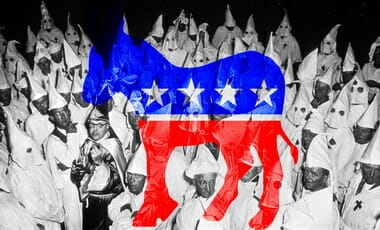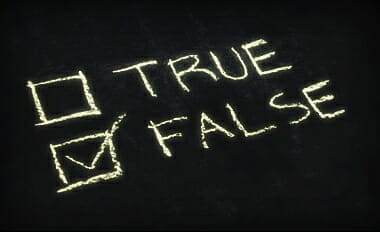This is an update to an older post. Some of it predating 2010 (2006/2009) and much of it refuting the myths in the propaganda when they were fomented. (I did update the “old/young divide” portion when comparing Democrats and Republicans – mainly because I was curious how the demographics have changed. As well as the 2016, 2020, and 2024 election/richest counties stats.) So some of the links may be bad. I apologize.
A VICTOR DAVIS HANSON’S OLIGARCHY MALARKEY UPDATE:
(This is via TWITCHY and my upload to RUMBLE)
Political commentator Victor Davis Hanson says the Democrats’ anti-oligarchy stance makes no sense. Why? They are the party of the wealthy class. They are the billionaires’ party. Instead, he says the party is using the ‘oligarchy’ term to go after billionaires who have left the Democrat Party. Democrats don’t hate billionaires, they just hate the ones they no longer control and who are no longer on their side.
“They don’t tolerate apostates” | VDH tears the Democrat “Oligarchy” narrative to absolute SHREDS:
“They use this term to castigate the relationship between Donald Trump and Elon Musk.”
“The ten wealthiest people in the US until recently were all lavish donors for the Democrats….So why are they so angry at the “oligarchs” when they were synonymous with Democrats?”
“They don’t tolerate apostates, so they are angry. They are angry they don’t have a lock on the oligarchs.”
“They demand absolute loyalty…any defections or apostates causes them to go ballistic…that anyone would doubt their ability to control big money in the United States.”
RICHEST COUNTIES UPDATE:
(Jump to OBAMA STATS)
2016 ELECTION
… Hillary Clinton lost the presidential election, but won the balloting in regions that generate nearly two-thirds of the American economy, a new analysis shows.
According to the Brookings Institution analysis, the less-than-500 counties Clinton won nationwide combined to generate 64 percent of America’s economic activity in 2015, the Washington Post reported.
The more-than-2,600 counties President-elect Donald Trump won combined to generate 36 percent of the country’s economic activity last year.
With the exceptions of the Phoenix, Ariz., and Fort Worth, Texas, areas, and a large part of Long Island, N.Y., Clinton won every large-sized economic county in the country, the researchers found. ….
(NEWSMAX)
2020 ELECTION
… President Donald Trump carried 2,497 counties across the country that together generate 29% of the American economy, according to a new study by the Brookings Institution. President-elect Joe Biden won 477 counties that together generate 70% of U.S. GDP.
Republicans represent a far greater number of smaller counties with less-educated, more-homogenous workforces that, on average, tend to rely on manufacturing, agriculture and mining. …
(CNBC)
2024 ELECTION
… In America’s 15 wealthiest counties by median household income, a total of 3,863,906 people voted for either Trump or Harris. Other candidates, of course, received a handful of votes, but this analysis excludes them.
Of those 3,863,906 voters, 1,368,528 voted for Trump, compared to 2,495,378 who voted for Harris. In other words, voters in America’s 15 wealthiest counties chose the former vice president by a margin of nearly 30 percentage points (64.58-35.42).
As massive as that margin appears, however, it only begins to tell the story.
For instance, the top six counties on that list all have something in common. Namely, they are located either in Silicon Valley (#2 Santa Clara, California; and #3 San Mateo, California) or in the suburbs of Washington, D.C. (#1 Loudoun, Virginia; #4 Falls Church, Virginia; #5 Fairfax, Virginia; and #6 Howard, Maryland).
Of course, Big Tech and connections to the federal government account for concentrations of wealth in those counties.
In 2024, 2,013,974 people in those six wealthiest counties voted for Trump or Harris. The president received 612,587 votes compared to 1,401,387 votes for the former vice president, a margin of nearly 40 percentage points in Harris’ favor (69.58-30.42). …
OLDER POSTS:
Rich Get Poorer | Poor Get Richer (+More Mantras Destroyed)
May of 2015
A JOHN STOSSEL UPDATE:
I changed the very beginning of this Yahoo News article to include both the headlines of the NYTs:
…The New York Times headline of Oct. 26 even more dubious and deceptive, “Top Earners Doubled Share of Nation’s Income, Study Finds”. The subhead announces “The top 1 percent of earners more than doubled their share of the nation’s income over the last three decades,” but readers must make their way to the sixth paragraph to find that the referenced “report” is actually a historical analysis by the Congressional Budget Office, covering a 28-year span between 1979 and 2007, and pointedly concluding before the economic meltdown of 2008.
Figures from the IRS, however, demonstrate that since the recession began the rich hardly got richer: the number of Americans earning $1 million or more fell a staggering 40 percent between 2007 and 2009 (declining to 236,883), while their combined incomes fell by nearly 50 percent—a vastly greater loss than the 2 percent drop in total incomes of those making $50,000 or less. Could anyone make a plausible case for how a massive reduction in the number of top earners (with nearly 200,000 fewer million-dollar incomes) could conceivably benefit the economy, or count as good news for anyone?
Nevertheless, the Times chose to stress the inflammatory finding that in the 29 years preceding the Great Recession the top 1 percent of earners (those pesky millionaires and billionaires) boosted their average, inflation-adjusted, after-tax income by 275 percent.
Surely worried readers might conclude that such “obscene” enrichment by the greediest would inevitably impoverish the neediest, leaving only miserable crumbs for the beleaguered middle class. But the CBO numbers actually showed that big gains for top earners did nothing to prevent simultaneous (if more modest) improvements by every other income group. For instance, the middle class (the 60 percent of the population in the 21st through 80th percentiles), raised their average inflation-adjusted, after-tax household income by a healthy 40 percent. Even the bottom 20 percent of the population moved ahead during the Reagan, Clinton and George W. Bush booms, lifting their earnings 18 percent….
Here is another visual help:
This next section shows that when Presidents are in office that support unions, the income disparity gap-widens.
Investors Business Daily makes some key points that are hard to ignore:
Income Inequality Rose Most Under President Clinton
…But it turns out that the rich actually got poorer under President Bush, and the income gap has been climbing under Obama.
What’s more, the biggest increase in income inequality over the past three decades took place when Democrat Bill Clinton was in the White House.
The wealthiest 5% of U.S. households saw incomes fall 7% after inflation in Bush’s eight years in office, according to an IBD analysis of Census Bureau data. A widely used household income inequality measure, the Gini index, was essentially flat over that span. Another inequality gauge, the Theil index, showed a decline.
In contrast, the Gini index rose — slightly — in Obama’s first two years. Another Census measure of inequality shows it’s climbed 5.7% since he took office.
Meanwhile, during Clinton’s eight years, the wealthiest 5% of American households saw their incomes jump 45% vs. 26% under Reagan. The Gini index shot up 6.7% under Clinton, more than any other president since 1980…
[….]
As University of Michigan economist Mark Perry notes, while the income gap has grown since 1979, almost the entire increase occurred before the mid-1990s: “There is absolutely no statistical support for the commonly held view that income inequality has been rising recently.”
A similar analysis found that income inequality has fallen among individuals since the early 1990s, but risen among households due to factors such as more marriages of people with similar education levels and earnings potential.
Others argue that income mobility matters more than equality.
One study found that more than half of the families who started in the lowest income bracket in 1996 had moved to a higher one by 2005. At the other end of the spectrum, more than 57% of families fell out of the top 1%.
Another smaller post points out nearly the same:
…The left says current levels of income inequality echo the late 1920s and the Gilded Age. They’ve zeroed in on the richest 1%, citing Census Bureau data showing these top earners “grabbing” more income than the bottom 90%.
But the census stats are misleading.
For one, they are a snapshot of income distribution at a single point in time. Yet income is not static. It changes over time. Low-paying jobs from early adulthood give way to better-paying jobs later in life.
And income groups in America are not fixed. There’s no caste system here, really no such thing even as a middle “class.” The poor aren’t stuck in poverty. And the rich don’t enjoy lifetime membership in an exclusive club.
A 2007 Treasury Department study bears this out. Nearly 58% of U.S. households in the lowest-income quintile in 1996 moved to a higher level by 2005. The reverse also held true. Of those households that were in the top 1% in income in 1996, more than 57% dropped to a lower-income group by 2005.
Every day in America, the poor join the ranks of the rich, and the rich fall out of comfort.
So even if income equality is increasing, it does not mean income mobility is decreasing. There is still a great deal of movement in and out of the richest and poorest groups in America.
The Republicans are the Party of the rich, and run by old, rich white guys who like to say “no” all the time.
Thinking through leftist mantras:
✪ Average age of Democrat’s in the House (average age): 74
“I could run 20 years from now and still be about the same age as the former Secretary of State (Hillary Clinton) is right now” ~ Rep. Governor Scott Brown
✪ Average age of House Republicans? 53
Seven of the top ten richest people in Congress are Democrats. The top five donors to unrestricted super PACs reads like a billionaire boys club and are Democratic donors/supporters. Here is more:
- We cross-checked the Open Secrets list of the top 100 individuals donating to outside spending groups in the current election against the Forbes list of the world’s billionaires and found that, as of June 19, there were 22 individuals on the Open Secrets list who were billionaires. Of those 22 billionaires, 13 — or more than half — gave predominantly to liberal groups or groups affiliated with the Democratic Party. The other nine gave predominantly to conservative groups. (A list of billionaires and how much they donated can be found here.)
Nor are we the party of “NO”
ERGO:
the Democratic Party are run by old,
rich, white, obstructionist, men.
“Not the Republican Party.
AS AN ASIDE… I wrote the above years ago when these accusations were all the rage. TODAY the stats are pretty even ~ as of January 2025:
- Overall, the median age of House Democrats is 57.6, while the median age of House Republicans is 57.5.
- In the Senate, the median age of all Democrats is 66.0, a bit higher than the median for Republicans (64.5).
In fact, the richest 8-of-10 counties voted for Obama… and consistently when the states are separated by red-and-blue, the most charitable states are red, the most stingy (greedy) are blue states. And the richest Congressmen are typically Democrats.
Here is a partial reproduction of an old series I did on this site… the USPS driver for the warehouse I use to work at was a Leftie but would bring me small articles from a “local” small magazine. He enjoyed reading my rebuttals I presume. The author of the “Concepts” articles has passed away many years ago.
(You can enlarge the article by clicking it.) This is a local, small town magazine, and John Van Huizum writes a regular piece that I will critique here-and-there. Here is my first installment:
I wish to write a response to a recent Concepts article by John Van Huizum, entitled “What Does ‘Free’ Mean?” There are a couple issues worth responding to or in-the-least offering a differing viewpoint on. The first of Mr. Huizum’s positions that needs de”concept”ualizing is the idea of “greed.” Mr. Huizum spoke of history, something Dr. Sowell reminds us of in the telling of Richard Sears ferocious greed in wanting to overtake Montgomery Ward.[1] This type of greed leads to lower prices. Alternatively the Fords, Rockefellers, and the Carnegies found ways to offer goods at lower prices. This type of greed leads to Carnegie — for instance — becoming a “prodigious philanthrop[ist] – building more than 3,000 public libraries in 47 states…, founding Carnegie-Mellon University and the Carnegie Institute of Technology (C.I.T.), establishing Carnegie Hall in New York, the Carnegie Endowment for International Peace, and much more.”[2]
In a wonderful response to Donahue’s 1979 challenge to Milton Freidman on the issue of greed and if greed has ever caused Dr. Friedman to doubt capitalism. Milton Friedman responded that “the world runs on individuals pursuing their own interests, the great achievements of civilization have not come from government bureaus. Einstein didn’t construct his theory from an order of a bureaucrat. Henry Ford didn’t revolutionize the automobile industry that way. In the only cases in which the masses have escaped from the kind of the grinding poverty you’re talking about, the only cases in recorded history are where they have had capitalism and free trade.”[3] So I wish to proffer another history that maybe, just possibly Forbes is taking into account and Mr. Huizum is not.
Another point worth politely rejecting is the definition given to Forbes by Mr. Huizum on freedom: “free from ANY government regulation.”[4] This is a fallacy of straw-man.[5] Mr. Huizum does not show a full knowledge of Forbes understanding on this matter. Nor does the facile dealing with this complex issue and the putting forth of a false definition as if-it-were Forbes do this topic justice.
One last point, the most important. Unlike big business when it makes mistakes, big government cannot go out of business. Unlike corrupt government, corrupt business cannot print money and thereby devalue a nation’s currency. Businesses cannot coerce you by force (tax liens, garnishing of wages, or armed IRS officials, etc) into an action. So the “greed” of the corporation pales in comparison to the greed of government.[6] Which is why our Founders stated that, “The Constitution is not an instrument for the government to restrain the people, it is an instrument for the people to restrain the government” (Patrick Henry); “Government is not reason; it is not eloquence. It is force. And force, like fire, is a dangerous servant and a fearful master” (George Washington).
Footnotes:
[1] Thomas Sowell, Basic Economics (New York, NY: Basic Books, 2004), 361.
[2] Michael Medved, The 10 biggest Lies About America (New York, NY: Crown Forum, 2008), 132; see also, “What Did He Get for That Money?”
[3] youtu.be/RWsx1X8PV_A
[4] John Van Huizum, Agua Dulce/Acton Country Journal, Vol. XXII, Issue 21 (May 26, 2012), 19.
[5] a) Person A has position X; b) Person B presents position Y (which is a distorted version of X); c) Person B attacks position Y; d) Therefore X is false/incorrect/flawed.
[6] Dennis Prager, Still the Best Hope (New York, NY: Broadside Books, 2012), 35-36.









 The Matildas were missing several established internationals on Wednesday night, including star striker Kyah Simon. They also rotated players more than usual, which contributed to a lack of cohesion. However, there is no denying losing to a team of school boys is far from ideal preparation for the world’s fifth ranked team in their quest for Olympic gold at Rio. The following is with a H/T to
The Matildas were missing several established internationals on Wednesday night, including star striker Kyah Simon. They also rotated players more than usual, which contributed to a lack of cohesion. However, there is no denying losing to a team of school boys is far from ideal preparation for the world’s fifth ranked team in their quest for Olympic gold at Rio. The following is with a H/T to
























